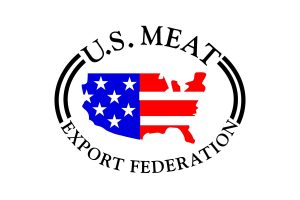IARN — COVID lockdowns have created tremendous food distribution challenges in and around the Shanghai metropolitan area. While the Port of Shanghai remains open, importers face difficulties finding drivers to pick up cargo and deliver it to distribution warehouses. With millions of consumers under shelter-in-place orders, getting food to end users is also increasingly difficult.
Joel Haggard, U.S. Meat Export Federation (USMEF) senior vice president for the Asia Pacific, said that distribution of imported meat is made even more challenging by China’s package testing and disinfection requirements, which were in place even before the lockdowns.
“Shanghai residents have been in their flats 10 or 11 days but because some neighborhoods had reported cases waiting for the city-wide lockdown, some have been confined to their homes for 30 plus days,” Haggard said. “Perhaps the biggest issue at the moment is ensuring all those under lockdown are receiving food and the challenges are enormous. With the help of a huge volunteer corps, bundles of essential foodstuffs are being sent to the front doors of every household. There are two other main ways to try and secure food. You can try to order online, but ecommerce platforms are jammed and the success rate is low in being able to actually book a delivery. The second way is through group buying schemes whereby residents of one building collectively try and place larger wholesale sized orders, but it is difficult to book an order and more importantly, to get a guaranteed delivery time. Delivery workers can’t get to the warehouses and even if delivery workers pick up goods, they have to run a gauntlet of checks to get to the perimeters of the locked down neighborhoods and buildings.”
While the challenges are hefty right now, Haggard is still optimistic that consumer demand will return once the restrictions in Shanghai are eased.
“Clearance times at the port for imported goods are slow because importers can’t easily submit paperwork,” Haggard said. “It’s difficult to secure drivers to pick up containers at the port and then to get those containers to the wholesale markets. For imported meat, the challenges are even greater because all imported cold chain products must first move to a designated central warehouse where the meat packaging is tested for the presence of COVID particles and every box must go through a disinfection process. Want to move product out of Shanghai to neighboring cities and other consumption areas? Well, if you’re driving them expect quarantine checks, especially at the roadway entry points to major cities. The driver is getting checked out for his most recent COVID test and the imported products are getting checked out for all their inspection, disinfection paperwork. It’s definitely a challenging situation right now, but we do remain optimistic that the current hurdles will be short-lived.”
For more information, visit usmef.org.
Story courtesy of the Iowa Agribusiness Radio Network.
Photo courtesy of U.S. Meat Export Federation













